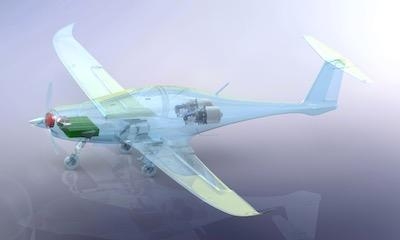Tue, Jul 26, 2022
Electric Flight Orchestra…
NASA’s Electrified Powertrain Flight Demonstration (EPFD) program seeks to hasten humankind’s transition from conventional, fossil-fuel-burning aircraft to ostensibly greener machines powered by Electrified Aircraft Propulsion (EAP) technologies. In collaboration with private industry partners, the space agency conducts ground and flight-tests of extant aircraft retrofitted with electric propulsion systems.

NASA posits that only by assessing and addressing the technical barriers and risks inherent fitting electric powertrains to existing airliners can standards be developed for future EAP aircraft. In addition to its regulatory aims, the EPFD program sets out to provide NASA’s aerospace industry partners data and experience by which to produce lighter, more powerful and efficient motors; improved pilot-interfaces with subject motors; and batteries and electronics conducive to maximizing aircraft safety and range.
NASA aspires to conduct at least two flight demonstrations of aircraft kitted out with electric powertrains developed under the auspices of its EPFD program within the next five-years. Longer-term, the space agency means to see such powertrains in broad use across America’s commercial airline fleet by 2035.
To meet its ambitious objectives, NASA has chosen a pair of U.S. companies—G.E. Aviation and MagniX—to develop electric propulsion technologies. To better motivate them, the two companies were awarded federal grants totaling $253-million—$179-million to G.E. and $74-million to MagniX.
The EPFD program is part of a larger NASA undertaking called Integrated Aviation Systems, which develops means by which to turn inchoate technologies into real-world, operational flight systems.

Across the globe, myriad companies are about the business of developing electric aircraft propulsion systems for light aircraft and the eVTOL vehicles saliant to emergent air-taxi markets. The diminutive size of such aircraft mitigates the weight—and therefore the output and endurance—of the batteries by which they’re powered. The regional and narrow-body aircraft upon which NASA’s EPFD program is predicated—by dint of their greater size and superior lift-production—allow for the carriage of heavy, powerful, long-lasting batteries that allow researchers to circumvent the fundamental, weight/power/endurance paradox by which the development of electric aircraft powertrains has been chronically hampered.
More News
Aero Linx: Model Aeronautical Association of Australia MAAA clubs are about fun flying, camaraderie and community. For over 75 years, the MAAA has been Australia’s largest fl>[...]
Touchdown Zone Lighting Two rows of transverse light bars located symmetrically about the runway centerline normally at 100 foot intervals. The basic system extends 3,000 feet alon>[...]
“Discovery and innovation are central to our mission at Virgin Galactic. We’re excited to build on our successful record of facilitating scientific experiments in subor>[...]
How To Get A Story On Aero-TV News/Feature Programming How do I submit a story idea or lead to Aero-TV? If you would like to submit a story idea or lead, please contact Jim Campbel>[...]
Student Pilot Reported That During Rotation, “All Of A Sudden The Back Of The Plane Kicked To The Right..." Analysis: The student pilot reported that during rotation, “>[...]
 ANN's Daily Aero-Linx (05.02.24)
ANN's Daily Aero-Linx (05.02.24) ANN's Daily Aero-Term (05.02.24): Touchdown Zone Lighting
ANN's Daily Aero-Term (05.02.24): Touchdown Zone Lighting Aero-News: Quote of the Day (05.02.24)
Aero-News: Quote of the Day (05.02.24) ANN FAQ: Contributing To Aero-TV
ANN FAQ: Contributing To Aero-TV NTSB Final Report: Cirrus Design Corp SR20
NTSB Final Report: Cirrus Design Corp SR20




